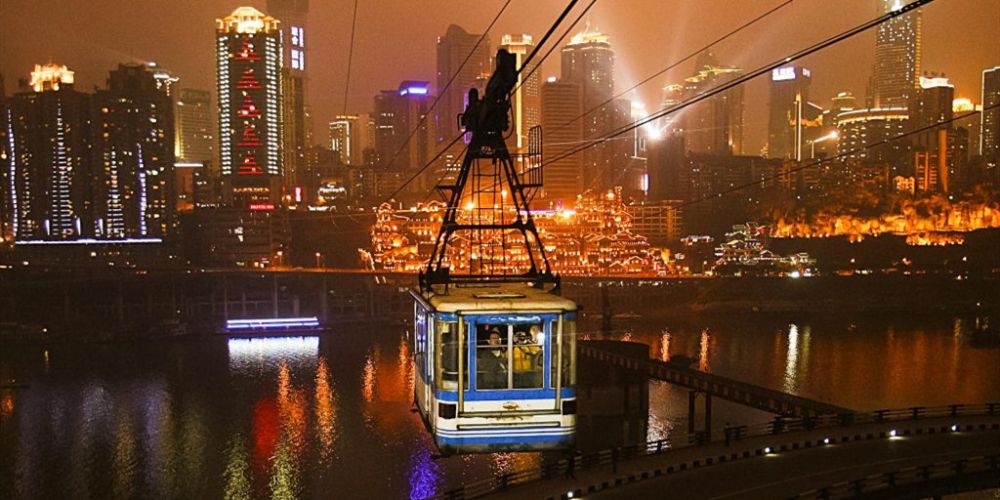

The Yangtze River Cableway has been an iconic attraction in Chongqing, China since its inauguration. Commissioned in 1980 and officially opening to the public in 1982, the cableway was originally constructed as a practical transportation method to facilitate the crossing of the Yangtze River for locals. Before the construction of bridges in the area, the cableway served as a crucial link between the Yuzhong and Nan'an districts.
While it commenced operations with an emphasis on utility, the Yangtze River Cableway quickly garnered attention from tourists for its unique urban views and the thrilling experience it provided. As it gained popularity, the initial capacity was expanded to cater to the growing number of passengers, evolving into a must-see attraction for visitors to Chongqing.
Over the years, the development of infrastructure such as bridges and subway lines has made the practical use of the cableway less necessary, but its tourism appeal has only increased. The Yangtze River Cableway now primarily serves tourists wishing to experience remarkable panoramic perspectives of the sprawling cityscape against the backdrop of the mighty Yangtze River.
The modern cable car system has been upgraded with new technology and improved facilities to enhance the comfort and security for its visitors. This urban aerial tramway offers a brief but memorable ride, extending around 1,160 meters and lasting about 5 minutes, giving tourists an unparalleled view of one of China’s most dynamic cities and its river.
Recently, there's been a trend towards incorporating the cableway into broader sightseeing experiences, such as city tours and river cruises. These activities often include a ride on the cableway, alongside visits to other notable landmarks such, as the ancient town of Ciqikou and the modern Hongya Cave complex.
Interactive experiences, including augmented reality (AR) and virtual reality (VR) platforms, have been introduced to provide informative content and enhance visitor engagement. Tourists can now learn about the history and cultural significance of the Yangtze River Cableway and the areas it connects through immersive technological installations.
The cableway ride at night has become especially popular among tourists due to the stunning views of Chongqing’s city lights. The illuminated skyline with the river reflection creates a picturesque scene, making it a prime time for photography enthusiasts and romantics alike.
The Yangtze River Cableway remains a testament to Chongqing's innovative approach to urban transportation and development and signifies the interplay between utility and tourism attraction. Its continued popularity among both domestic and international travelers serves as a reminder of its enduring appeal and its place in the fabric of Chongqing’s rich city life.